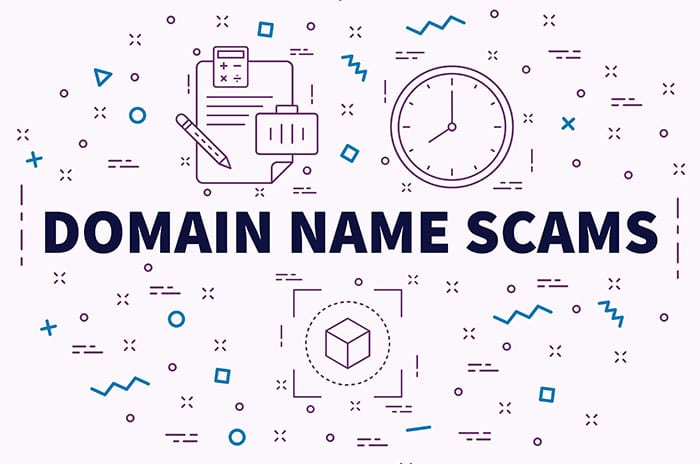Estimated Read Time: 3 Minutes
Your business website’s domain name is one of the most important parts of your brand. Customers use it to find you online, you place it in your marketing material, and it is a key factor when determining your organic search ranking.
Scammers know this, and that is why domain name scams are one of the most common we see business owners receive. In this month’s Vortex Marketing Blog, we’ll detail how to identify potential scams and protect your business.
Note: this article was originally posted in January 2021, but we have noticed an increase in scams targeting our clients, and thought that updating this with some additional information would be prudent.
What Is a Domain Scam?
A domain scam is when a malicious third party tries to take control of your business’ domain name. If someone controls your domain name, they can manipulate where users are sent when they visit your website.
The most common scam we see involves an email falsely claiming that your domain is expiring, and you need to renew it through their provided link. These can come in the form of official-looking invoices, urgent emails, or email addresses that look similar to common registrars like GoDaddy. We’ve even seen these delivered through traditional post!
While domain scams take different forms, the main defining characteristic is that they are impersonating your registrar in an attempt to gain control of your domain.
Common Domain Scams
One of the most common scams we have seen this year has been a letter in the mail from the US Domain Authority, claiming that you need to pay them anywhere between $75 and $300 for an “annual website domain listing.”
This letter looks very official, which is why it can catch some unsuspecting business owners off guard. But be warned: do not pay this company. It is a scam.
The company name and price may differ, but this is one of the most common types of scams to keep an eye out for.
How to Protect Yourself
Now that you have an idea of what a domain scam looks like, there are a few important ways you can protect yourself.
The first is to knowwhereyour domain is registered. Most domains are registered through websites like GoDaddy, HostGator, Google, and Network Solutions. If you aren’t familiar with your registrar, this can be found by doing a WHOIS lookup of your website. If you have an IT manager for your business, they should also know.
The second is to know when your domain expires. This can be found through invoices from your registrar, or by logging directly into your registrar. As stated earlier, one common scam is to claim that your domain is expired and you need to renew it. If you know when your domain expires, you know that you can ignore these scam emails, many of which are far more expensive than the normal 15 to 18 dollars a year!
Most domain registrars also offer a domain privacy package, which hides your name and contact information when someone does a WHOIS look up. These are affordable, at around 10 to 15 dollars a year, and add an extra layer of security.
The third is a basic rule for email communication in general: don’t click links from email addresses you don’t recognize. Make sure to read the email address carefully, as many try to present as official sites like GoDaddy or Google.
Conclusion
Domain scammers have been around since the beginning of the internet, but through caution and vigilance, you can easily protect yourself from potential threats and getting ripped off.
If you get an odd looking email or letter in the mail claiming that if you don’t act now, your domain will be compromised, cancelled, or something else ominous sounding, just relax! For additional peace of mind, you can always contact your IT department or company.
Having security issues with your website? Vortex offers state of the art hosting and security servicesfor all of our clients. Visit our websiteor call 319.621.0191 today!







